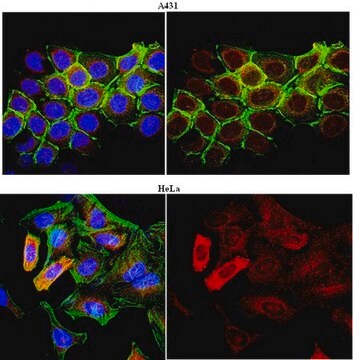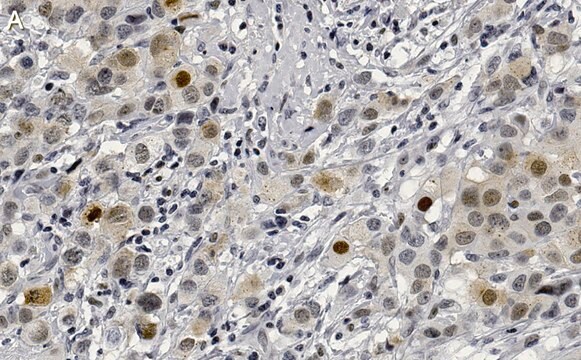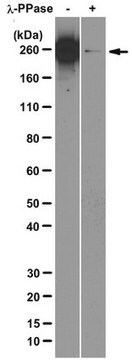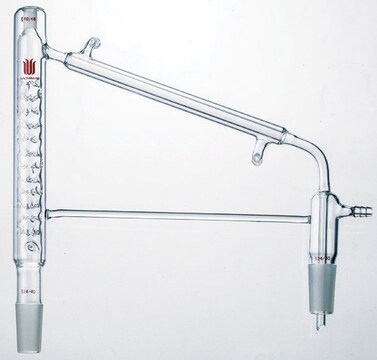04-1572-I
Anti-RNA polymerase II subunit B1 (phospho-CTD Ser-5) Antibody, clone 3E8
culture supernatant, clone 3E8, from rat
Sinónimos:
DNA-directed RNA polymerase II subunit RPB1, RNA polymerase II subunit B1, DNA-directed RNA polymerase II subunit A, DNA-directed RNA polymerase III largest subunit, RNA-directed RNA polymerase II subunit RPB1
About This Item
Productos recomendados
origen biológico
rat
Nivel de calidad
forma del anticuerpo
culture supernatant
tipo de anticuerpo
primary antibodies
clon
3E8, monoclonal
reactividad de especies
mouse
reactividad de especies (predicha por homología)
human (immunogen homology)
técnicas
ChIP: suitable
ELISA: suitable
western blot: suitable
isotipo
IgG2aκ
Nº de acceso NCBI
Nº de acceso UniProt
Condiciones de envío
dry ice
modificación del objetivo postraduccional
phosphorylation (pSer5)
Información sobre el gen
human ... POLR2B(5431)
Descripción general
Especificidad
Inmunógeno
Aplicación
ELISA Analysis: A representative lot was used by an independent laboratory to detect RNA polymerase II subunit B1 (phospho-CTD Ser-5) in ChIP (Chapman, R., et al. (2007). Science. 318(5857):1780 -1782.).
Epigenetics & Nuclear Function
Transcription Factors
Calidad
Western Blot Analysis: A 1:2,000 dilution from a representative lot detected RNA polymerase II subunit B1 (phospho-CTD Ser-5) in 10 µg of untreated and lambda phosphotase treated NIH/3T3 cell lysates.
Descripción de destino
Ligadura / enlace
Forma física
Almacenamiento y estabilidad
Handling Recommendations: Upon receipt and prior to removing the cap, centrifuge the vial and gently mix the solution. Aliquot into microcentrifuge tubes and store at -20°C. Avoid repeated freeze/thaw cycles, which may damage IgG and affect product performance.
Nota de análisis
Untreated and lambda phosphotase treated NIH/3T3 cell lysates
Cláusula de descargo de responsabilidad
¿No encuentra el producto adecuado?
Pruebe nuestro Herramienta de selección de productos.
Código de clase de almacenamiento
10 - Combustible liquids
Clase de riesgo para el agua (WGK)
WGK 1
Certificados de análisis (COA)
Busque Certificados de análisis (COA) introduciendo el número de lote del producto. Los números de lote se encuentran en la etiqueta del producto después de las palabras «Lot» o «Batch»
¿Ya tiene este producto?
Encuentre la documentación para los productos que ha comprado recientemente en la Biblioteca de documentos.
Nuestro equipo de científicos tiene experiencia en todas las áreas de investigación: Ciencias de la vida, Ciencia de los materiales, Síntesis química, Cromatografía, Analítica y muchas otras.
Póngase en contacto con el Servicio técnico








